Mauges-sur-Loire to Saint-Florent-le-Vieil
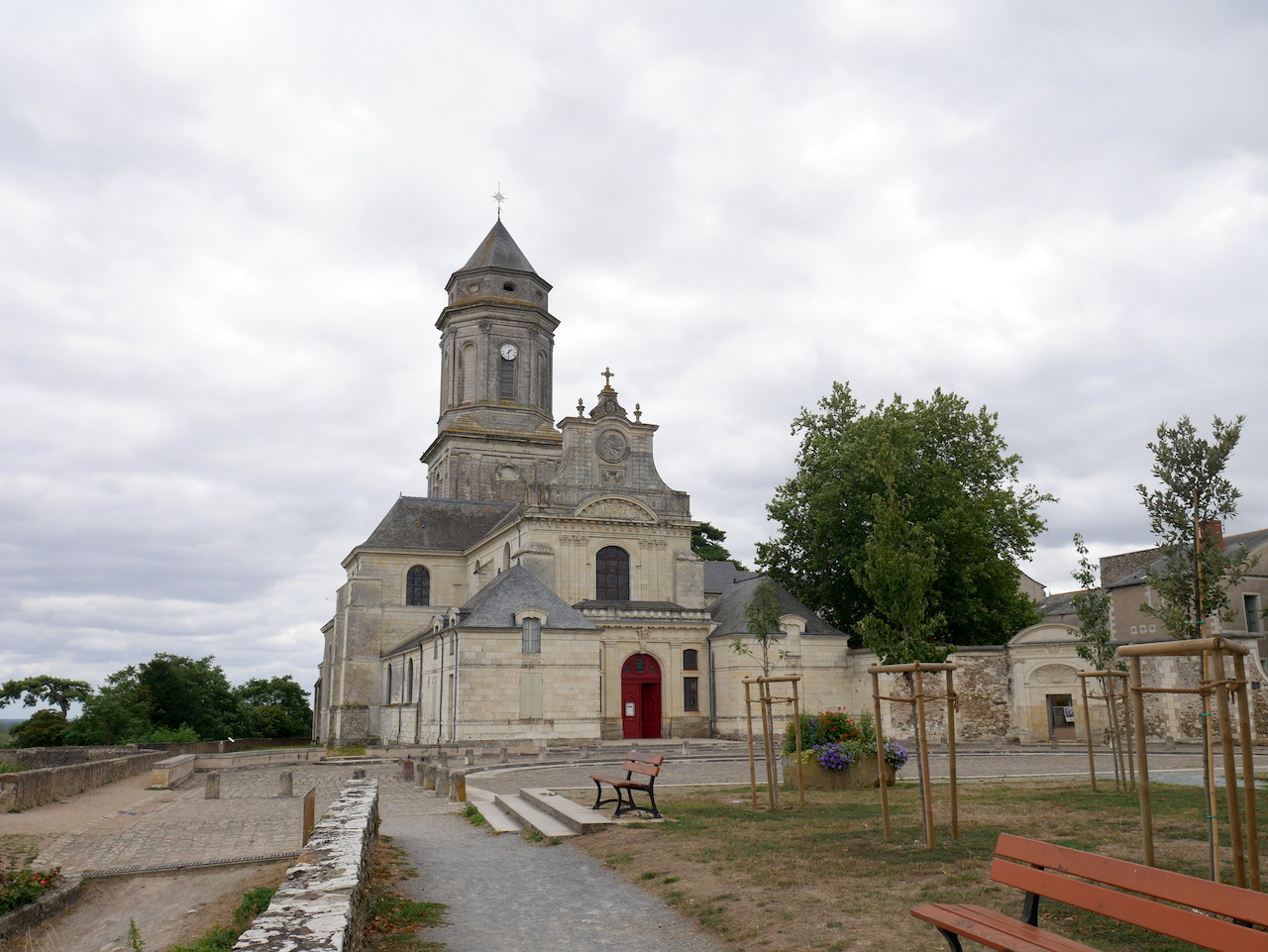
Pays de la Loire
3. Mauges-sur-Loire to Saint-Florent-le-Vieil
Medium
5h30
21,3km
+274m
-306m
Step
Embed this item to access it offline
During this stage you will discover cereal crops, the orchards of the Angevin bocage and some vineyards, with a slightly hilly relief that will offer varied landscapes. Small forests and ponds await you to enjoy their freshness. You will pass through two villages with a very interesting heritage before discovering the beautiful abbey church of Saint-Florent-le-Viel located on its hill on the banks of the Loire. Its rich heritage deserves to take the time to discover it.
All the communes of this stage are grouped around the new commune created in 2011, Mauges-Sur-Loire, the different names of the old communes have become "districts" of Mauges-sur-Loire.
All the communes of this stage are grouped around the new commune created in 2011, Mauges-Sur-Loire, the different names of the old communes have become "districts" of Mauges-sur-Loire.
6 points of interest
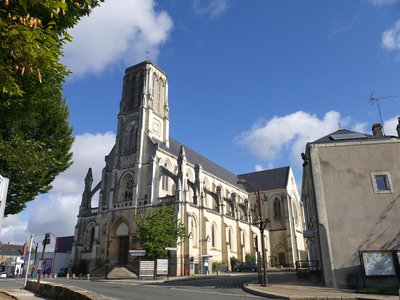
Église Saint-Martin de La Pommeraye - Amis saint Colomban TouristSaint-Martin church in La Pommeraye Mauges-sur-Loire
Saint-Martin church was built from 1864 to 1867, outside the old town in the presbyteral enclosure on the site of the former parish church.
In the shape of a Latin cross, in the ogival style with its three naves and two transepts, each decorated with a large rosette, built in tufa, it is difficult to resist the ravages of time.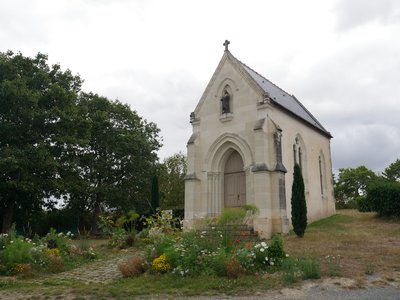
La chapelle Notre-Dame de la Salette superbement restaurée - Amis saint Colomban TouristNotre-Dame de la Salette Chapel at Le Mesnil-en-Vallée
In 1846, under the direction of Father Pineau, parish priest of Mesnil-en-Vallée, a wooden mission cross was erected. In 1880 a chapel replaced the mission cross.
In neo-gothic style, the chapel dominates the town, it was the place of pilgrimage during the feast of God.
Later a Calvary was erected next to the chapel.
The Chapel of the Angels with its canopy is leaning against the wall of the nearby cemetery.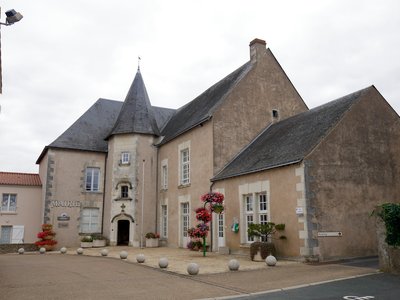
La Prévôté de Saint-Laurent-en-Mottay transformée en mairie. - Amis saint Colomban HistoricalThe Provost's house in Saint-Laurent-du-Mottay, now the town hall.
The parish of Saint Laurent du Mottay depended on the territory of the Abbey of Saint Florent le Vieil and was, moreover, the seat of the Provost of the Abbey. The Provost held regular meetings in his provostal hotel. He was in charge of the administration of the fiefdoms belonging to the monks of Saint Florent. The Provost was the Lord of the parish.
Saint-Laurent-du-Mottay had General de Gaulle as its honorary citizen. The commune shares this privilege with two major French cities: Paris and Strasbourg.
Maison, musée Julien Cracq - Mauges-sur-Loire.fr CulturalJulien Cracq (1910 – 2007)
His real name Louis Poirier, his literary pseudonym owes much to his fascination for the hero of Stendhal's "Le Rouge et Le Noir" and his admiration for the Gracques in Roman history. He decided to take a literary pseudonym, in order to clearly separate his activity as a teacher from his activity as a writer.
If "Au château d'Argol" (1938), his first novel, strongly influenced by Black Romanticism and Surrealism, had attracted the attention of André Breton, it was with "Le Rivage des Syrtes" (1951), and especially the spectacular refusal of its author to receive the Goncourt prize in 1951, that Julien Gracq made himself known to the public.
He donated his house to the Maison Julien Cracq association to welcome writers. The association made this house a place of memory and literary life as the writer had wished.
To visit the Maison Julien Cracq, please visit the website " Maison Julien Cracq ".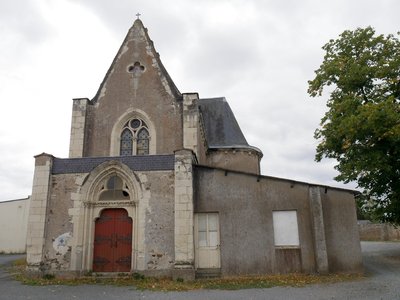
Façade de la Chapelle Cathelineau, le petit appentis est disgracieux. - Amis saint Colomban TouristThe Cathelineau Chapel in Saint-Florent-le-Vieil
The chapel is closed and awaits restoration.
The chapel represents one of the first expressions of the neo-Plantagenet style. It was built, between 1856 and 1858, by Count Théodore de Quatrebarbes, in order to receive the burials of Cathelineau, generalissimo of the armies of the Vendée, who died in Le Pin en Mauges in 1793, and of his son who died in 1832. The chapel was consecrated in 1858 by Mgr de Dreux-Brézé and became the property of the Sisters of Saint-Charles in 1861 before being acquired by the commune.
A plaque indicates the chapel of Monmoutier and Demontifroy -1660- the name of the previous chapel?
L’église abbatiale de Saint-Florent-le-Vieil en partie reconstruite au XVIIIe siècle. - Amis saint Colomban TouristSaint-Florent-le-Vieil Abbey
The abbey of Saint-Florent dates from the 7th century, built on the site of the Saint's burial place. The presence of pilgrims justifies this construction to welcome them.
Charlemagne had the monastery rebuilt, endowing it with "marble and admirable architecture". He also gave the monastery a vase known as the Holy Grail. Louis the Pious brought monks back from Italy and installed them in the monastery to establish the Benedictine rule.
During the Middle Ages, invasions brought destruction and looting. The monks fled to Tournus (Saône et Loire) then returned to settle in Saumur under the shelter of the castle and founded the abbey Saint-Florent de Saumur or Saint-Florent-le-Jeune to differentiate themselves from Saint-Florent-le-Vieux.
In the 17th century, the abbey came under the control of the Congregation of Saint-Maur which rebuilt the entire monastery and part of the abbey church.
The crypt is rebuilt in the 19th century.
Saint-Florent
According to legend, it is said that Saint Florian was the brother of Saint Florent, and that they grew up together on the banks of the Danube. Roman soldiers, they were condemned to death by the Aquilian prefect, after being tortured for refusing to sacrifice to the idols. The death chosen for them was drowning in the Enns, with a stone around their necks. But on the way, an angel appears to Florent and asks him to join Saint Martin in Tours, which he does, leaving his brother to the torments of martyrdom. Saint Martin, warned by an angel, ordains him a priest on his arrival.
Saint Florent must then go to Mont-Glonne, to rid the region of the snakes it was infested with, and to evangelize it.
Thereafter, he will travel a lot and perform many miracles. Among the most notorious, in Candes, he saved a child from drowning. He died, according to legend, on September 31, 390, near Mont-Glonne, at a very advanced age.
Description
In front of the church Saint-Martin de La Pommeraye take the rue de la Vieille église which turns your back, on the right, rue Pierre Chenu, on the left, rue du Godet, on the right rue du Général Forestier, on the left, rue de Vendée, D151
- On the right hand side of the path leading to the farm, stay on your left following the path with hedges on slopes, skirting the cereal field. Turn left then right still in the hedges, on the right field path, on the right cross the asphalt road.
- Take the path slightly on your right, stay on your left, straight ahead, at the crossroads asphalt road on the right, on the left field path, at the end of the vineyard field at the crossroads on the left, at the crossroads on the right second path on the left, at the end of the asphalt road first dirt road on the left.
- At the crossroads field road, left, then right at the crossroads in front of farm, La Gohardière, dirt road in front of you at the crossroads tarred roads, left crossroads dirt road, right on tarred road
- Before turning right on the road go straight on to take a dirt road between the fields, follow the main road, left at the tarmac road crossroads, at the "patte d'oie" take the second dirt road on the left, cross the village Le Mesnil-en Vallée, straight on to allée du Devaux, right rue de la Chapelle, cross the rue des Mauges take the rue du Commerce, right rue de Bellevue, left chemin du Moulin à Vent, right chemin du Moulin à Vent
- Cross chemin des Bréverrières, straight ahead pass in front of the farm shed, turn right, cross the grove and the brook, go along the pond on your right, on your left you will find a field path with hedges, entrance to Saint-Laurent du Mottay, on your left rue des Moulins, on your left rue Florence Longerye, on your right rue de la Mare, on your right rue de la Houssaye, straight ahead, on your right in front of the monument, go around the pond on your left then enter on your right in the woods.
- After having skirted the pond on your left, take the road on the right then asphalt road, after the farm take the orchard road on the left, on the left at the crossroads of the hedge paths, on the right La Marcheboire, dirt road at the crossroads in front of the farm, stay on the main road, on the right at the crossroads of the 4 roads, on the left on asphalt road.
- Turn right at the crossroads of the 4 asphalt roads, right at the fork, right crossroads D751, first road on the left, cross La Thau, left at the crossroads, left in front of the Loire, follow the Loire, road on the right, Promenade Julien Cracq, cross the car park on the left, Quai de Loire, second street on the left, rue d'Enfer, on the right rue Jacques Cathelineau, cross the rue de Bretagne, Grande Rue, turn right rue Charles de Renneville, on the right on place d'Armes you arrive in front of the abbey Saint-Laurent.
- Departure : Saint-Martin de Vertoux Church, 1 Rue de la Loire, La Pommeraye, 49 620 Mauges-sur-Loire
- Arrival : Saint-Florent Abbey Church du Mont-Glonne, Place Jeanne Bussonnière, 49 410 Saint-Florent-le-Vieil
- Towns crossed : Pays de la Loire
Altimetric profile
Transport
Saint-Florent-le-Vieil, gare SNCF on the right bank of the Loire in Varades
Report a problem or an error
If you have found an error on this page or if you have noticed any problems during your hike, please report them to us here:






